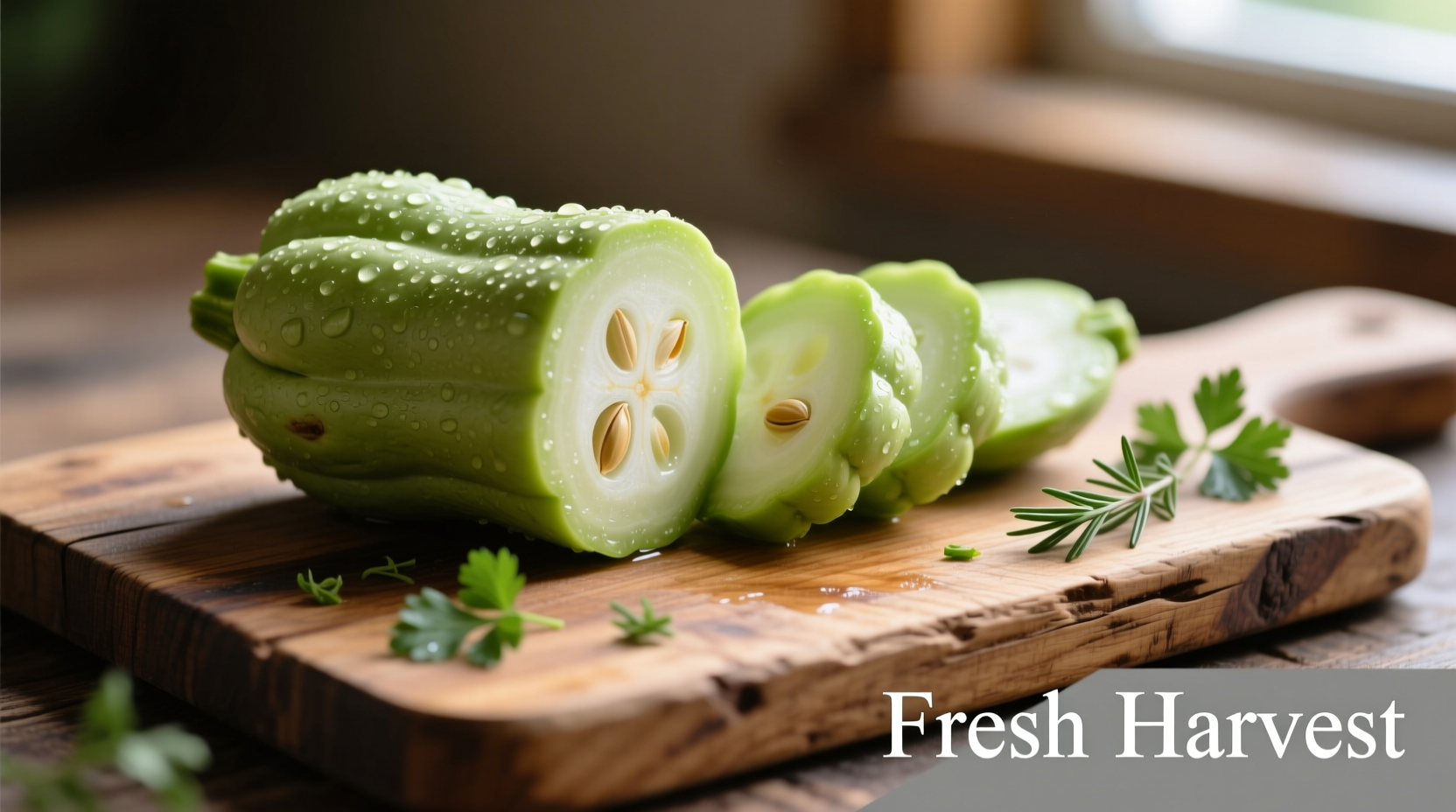Often called "mirliton" or "christophene," this pear-shaped squash from the gourd family delivers a refreshingly neutral taste that makes it incredibly versatile in the kitchen. Whether you're encountering chayote for the first time or looking to expand your culinary repertoire, understanding its flavor profile helps you leverage this nutrient-rich vegetable effectively.
Experiencing Chayote's Flavor Profile
When you bite into raw chayote, you'll notice its delicate sweetness—less pronounced than summer squash but more defined than zucchini. The flesh offers a clean, refreshing quality reminiscent of young cucumbers with a faint apple-like undertone. Unlike many vegetables that assert strong personalities, chayote plays a supporting role, absorbing surrounding flavors while contributing its subtle essence.
According to agricultural researchers at the University of California Cooperative Extension, chayote's mildness stems from its low concentration of volatile compounds responsible for stronger vegetable flavors. This characteristic makes it particularly valuable in dishes where you want vegetable presence without overwhelming taste.
How Texture Influences Taste Perception
Chayote's texture significantly impacts how we perceive its flavor. When raw, it delivers a satisfying crunch similar to water chestnuts, with a moisture content that enhances its refreshing quality. The crispness creates a sensory experience that complements its mild sweetness.
Cooking transforms chayote's texture dramatically. Properly prepared, it becomes tender while maintaining structural integrity—never turning mushy like some summer squashes. This textural balance allows it to hold sauces and seasonings effectively without disintegrating. Overcooking, however, can lead to a rubbery consistency that detracts from both texture and flavor absorption.
Cooking Methods and Flavor Development
How you prepare chayote directly influences its taste experience. Each cooking technique brings out different aspects of its flavor profile:
- Raw preparation: Retains maximum crispness with subtle sweetness, perfect for salads and slaws
- Steaming: Preserves delicate flavor while softening texture slightly
- Sautéing: Develops gentle caramelization that enhances natural sweetness
- Roasting: Concentrates flavors and creates appealing golden edges
- Boiling: Can dilute flavor if overdone, but works well for soups and stews
Food scientists at Texas A&M AgriLife Extension note that chayote contains enzymes that can break down when exposed to heat, which explains why properly cooked chayote develops slightly sweeter notes than its raw counterpart. The vegetable's high water content (approximately 94% according to USDA FoodData Central) means it benefits from seasoning both during and after cooking to maximize flavor absorption.
| Vegetable | Flavor Profile | Texture (Raw) | Best Cooking Methods |
|---|---|---|---|
| Chayote | Mild, slightly sweet, cucumber-like | Crisp, juicy | Sautéing, roasting, steaming |
| Zucchini | Earthy, mildly sweet | Firm but tender | Grilling, baking, stir-frying |
| Cucumber | Cool, refreshing, slightly bitter | Very crisp, watery | Raw consumption, pickling |
| Jicama | Sweet, nutty, apple-like | Extremely crisp, starchy | Raw consumption, light stir-frying |

Culinary Applications Based on Taste Characteristics
Chayote's neutral flavor makes it exceptionally versatile across culinary traditions. In Latin American cuisine—where it originated—chayote appears in everything from Salvadoran revueltas to Mexican picaditas. Its ability to absorb surrounding flavors while maintaining its structure explains its popularity in diverse dishes.
Professional chefs often describe chayote as the "canvas vegetable"—perfect for showcasing other ingredients while contributing nutritional value and textural interest. When preparing chayote, consider these flavor pairing strategies:
- Enhance its natural sweetness with citrus zest or a splash of vinegar
- Complement with bold seasonings like garlic, cumin, or smoked paprika
- Pair with tropical fruits like mango or pineapple for refreshing salads
- Use in place of higher-carb vegetables to reduce calorie density without sacrificing texture
According to culinary research published in the Journal of Ethnic Foods, traditional preparation methods in Mesoamerican cultures often involve soaking chayote in salt water before cooking. This technique not only reduces any potential bitterness but also enhances its ability to absorb seasonings during cooking.
Selecting and Preparing for Optimal Flavor
Choosing quality chayote significantly impacts your taste experience. Look for firm, bright green specimens without wrinkles or soft spots. Smaller chayotes typically offer more tender flesh and delicate flavor, while larger ones may have tougher seeds and slightly more fibrous texture.
When preparing chayote, consider these professional tips:
- Peel thoroughly as the skin can be bitter
- Remove the soft seed in the center for best texture
- Soak cut pieces in acidulated water (water with lemon juice) to prevent browning
- Season early in cooking to allow flavors to penetrate
- Pair with complementary ingredients that won't overwhelm its subtle nature
Remember that chayote continues to develop flavor even after cooking. Allowing it to rest for 10-15 minutes after preparation lets the flavors meld and intensify slightly, creating a more cohesive dish.











 浙公网安备
33010002000092号
浙公网安备
33010002000092号 浙B2-20120091-4
浙B2-20120091-4